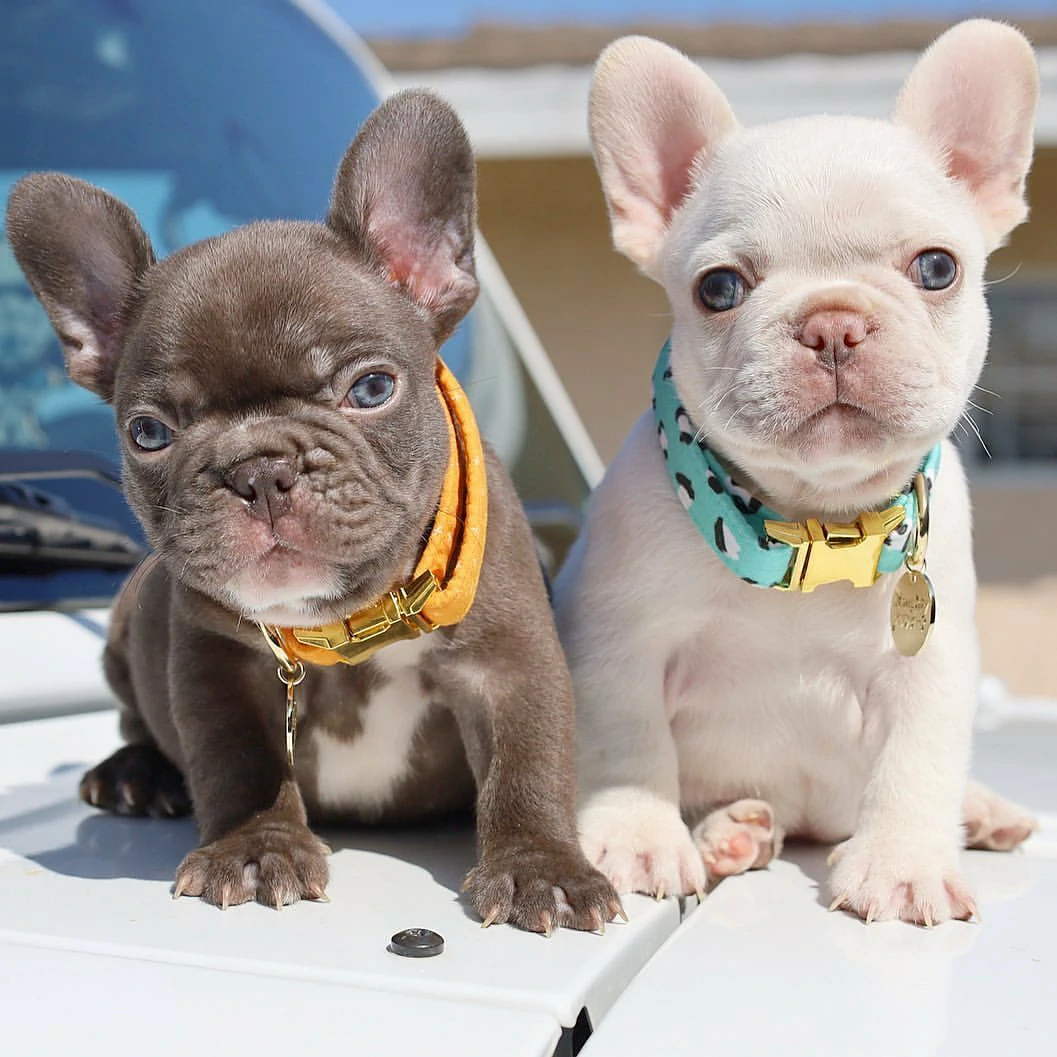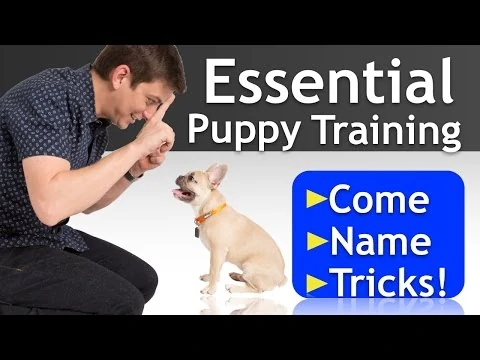Best French Bulldog Training Tips

Mastering Puppy Training: A Comprehensive Guide to 13 Essential Commands
- Getting Started
Embarking on Best Puppy Training Tips journey of puppy parenthood is both exciting and challenging. Just like human babies, puppies need guidance, patience, and consistent training to grow into well-behaved dogs. In this comprehensive guide, we delve deep into the world of puppy training, focusing on 13 essential commands every dog owner should teach their furry companion. From basic obedience to advanced tricks, this guide provides invaluable insights and techniques to help your puppy become a well-mannered and obedient member of the family.
Best Puppy Training Tips Quick Summary
Table of Contents
Acquiring French Bulldogs for sale is just the beginning of a beautiful journey with your new furry friend. Training your puppy is crucial in fostering a harmonious bond with your canine companion. This detailed guide, filled with top-notch French Bulldog training tips, provides you with the essential knowledge and techniques to train your puppy effectively. Whether it’s mastering basic obedience or learning advanced commands, with patience, consistency, and the appropriate training methods, you can shape your lively pup into a well-behaved and obedient dog.
The Importance of Puppy Training
Building a Strong Bond
Training your puppy serves as a bridge to build a strong bond and mutual understanding between you and your furry friend. Through training, you’ll learn to communicate effectively with your puppy, fostering trust and respect that will last a lifetime. A strong bond is crucial for a healthy and happy relationship, ensuring that your puppy feels secure and loved. Best Puppy Training Tips
Ensuring Safety and Well-being
Proper training is essential for your puppy’s safety and well-being. By teaching them basic obedience commands such as “sit,” “stay,” and “come,” you can prevent potential accidents and keep them out of harm’s way. Additionally, training helps your puppy develop self-control and discipline, enabling them to make better decisions and avoid dangerous situations.
Setting the Foundation: Basic Training Techniques
Positive Reinforcement
One of the most effective training techniques is positive reinforcement, which involves rewarding your puppy for good behaviour. Whether it’s a tasty treat, praise, or a favourite toy, positive reinforcement encourages your puppy to repeat desirable behaviours. This method not only makes training fun for your puppy but also strengthens the bond between you and encourages them to learn more eagerly.
Consistency is Key
Consistency is crucial when it comes to puppy training. Establishing a consistent routine and using the same commands and gestures will help your puppy learn faster and avoid confusion. Consistency also helps build trust and confidence in your puppy, as they know what to expect and how to respond in various situations. Best Puppy Training Tips
13 Essential Commands Every Puppy Should Learn

Sit: The “sit” command is one of the first commands you should teach your French Bulldog puppy. It’s a basic obedience command that teaches your puppy to sit down and stay calm, making it easier to control them in various situations. Start by holding a treat above your puppy’s head and moving it back towards their tail. As your puppy’s head goes up and their bottom goes down, say “sit” and reward them with the treat. Best Puppy Training Tips
Stay
The “stay” command teaches your puppy to remain in a specific position until you give them permission to move. This command is particularly useful in situations where you need your puppy to stay put, such as during meals or when greeting guests. Begin by having your puppy sit, then hold your hand out in front of them and say “stay.” Gradually increase the duration and distance as your puppy becomes more comfortable with the command.
Come
The “come” command is essential for calling your puppy back to you, especially in off-leash situations. Teaching your puppy to come when called can prevent them from getting lost or into potentially dangerous situations. Start by getting down to your puppy’s level and calling their name followed by the command “come.” When they respond and come towards you, reward them with praise or a treat.
Heel
The “heel” command teaches your puppy to walk beside you without pulling on the leash. This command is essential for controlling your puppy during walks and ensuring they don’t wander off or get distracted. Begin by holding a treat in your hand and letting your puppy sniff it. As you start walking, say “heel” and encourage your puppy to walk beside you. Reward them for staying in the correct position and walking calmly. Best Puppy Training Tips
Down
The “down” command teaches your puppy to lie down on command, helping to calm them down and keep them under control in various situations. Start by having your puppy sit, then hold a treat in front of their nose and slowly move it towards the ground. As your puppy follows the treat and lies down, say “down” and reward them with the treat.
Leave It
The “leave it” command teaches your puppy to ignore distractions and objects that they shouldn’t touch or play with, such as food scraps or dangerous items. Begin by placing a treat in one hand and closing it into a fist. Show your puppy the closed fist and say “leave it.” When your puppy stops trying to get the treat, praise them and give them a different treat from your other hand. Best Puppy Training Tips
Drop It
The “drop it” command teaches your puppy to release objects from their mouth, helping to prevent them from chewing or swallowing dangerous items. Start by offering your puppy a toy or object to play with. When they take it in their mouth, say “drop it” and hold out a treat. As soon as your puppy releases the object, reward them with the treat.
No
The “no” command is a universal command that can be used to discourage undesirable behaviours such as biting, jumping, or barking excessively. Use a firm but calm voice when saying “no” to let your puppy know that their behaviour is unacceptable. Redirect their attention to a more appropriate behaviour or distract them with a toy or treat.
Off
The “off” command teaches your puppy to get off furniture or stop jumping on people. Start by using a treat to lure your puppy off the furniture or gently pushing them off while saying “off.” When they respond and get off, reward them with a treat or praise. Best Puppy Training Tips
Wait
The “wait” command teaches your puppy to pause and wait for your permission before proceeding. This command is useful in various situations, such as before crossing the road or entering or exiting the house. Begin by having your puppy sit or stand, then hold your hand up in front of them and say “wait.” Reward them for waiting patiently and only give them permission to proceed when you’re ready.
Watch Me
The “watch me” command teaches your puppy to focus their attention on you, making it easier to redirect their attention or get them to follow your commands. Start by holding a treat in front of your face and saying “watch me.” When your puppy makes eye contact, reward them with the treat and praise.
Speak
The “speak” command teaches your puppy to bark on command, which can be a fun and entertaining trick. Start by encouraging your puppy to bark by making a noise or knocking on a surface. As soon as they bark, say “speak” and reward them with a treat. With practice, your puppy will learn to bark on command. Best Puppy Training Tips
Quiet
The “quiet” command teaches your puppy to stop barking on command, helping to control excessive barking and noise. Begin by saying “speak” to encourage your puppy to bark, then say “quiet” and hold a treat in front of their nose. As soon as they stop barking and remain quiet, reward them with the treat.
Troubleshooting Common Training Challenges

My puppy doesn’t seem interested in training. What should I do?
If your puppy appears disinterested in training, try using higher value treats or toys to motivate them. Additionally, ensure that training sessions are short and engaging to keep your puppy’s attention. Patience and persistence are key, so don’t get discouraged. Every puppy learns at their own pace, and with patience, consistency, and positive reinforcement, they will eventually catch on.
Can I train my puppy on my own, or should I seek professional help?
While it’s possible to train your puppy on your own using online resources and books, seeking professional help from a certified dog trainer can be beneficial, especially for more complex training issues.
Is it too late to start training if my puppy is older?
It’s never too late to start training, but older puppies may require more time and patience to learn new commands and behaviours. With consistent training and positive reinforcement, however, it’s possible to teach an old dog new tricks. Best Puppy Training Tips
FAQs About Puppy Training
What age should I start training my puppy?
It’s best to start training your puppy as soon as you bring them home, typically around 8 weeks of age. Early training helps establish good behaviours and habits, making it easier to train your puppy as they grow older.
How long should training sessions be?
Training sessions should be short and engaging, lasting no longer than 10-15 minutes to prevent your puppy from becoming bored or frustrated.
What treats should I use for training?
High-value treats such as small pieces of cooked chicken, cheese, or commercial dog treats are ideal for training. Make sure to use treats that your puppy finds irresistible to keep them motivated and eager to learn.
Can I use punishment-based methods for training?
Punishment-based methods are not recommended as they can cause fear and anxiety in your puppy, leading to behavioural issues. Positive reinforcement techniques are more effective and humane, promoting trust, respect, and a stronger bond between you and your puppy.
By following this comprehensive guide, you’ll be well on your way to mastering the art of puppy training and ensuring a happy, healthy, and harmonious relationship with your canine companion.